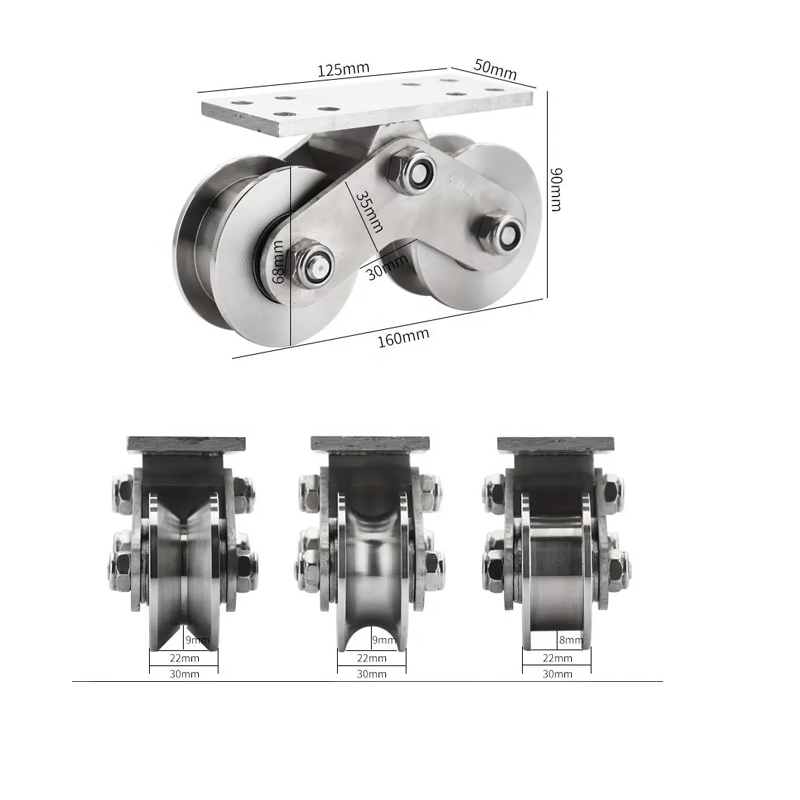No. 200 Gaoxin RD, Shanghua St, Lanxi, Zhejiang, P. R China
The multiple sizes high precision rack pinion gear system is an essent...
See Details
Gate wheels play a crucial role in extending the lifespan of gates by reducing wear and tear on gate posts and hinges. These wheels are commonly installed on the bottom of gates to distribute the gate's weight more evenly and allow for smoother movement. This simple yet effective addition to gate systems significantly reduces stress on the supporting structures, improving their performance and longevity. Understanding how gate wheels work can help users appreciate their importance in reducing maintenance costs and enhancing gate functionality.
One of the primary ways gate wheels reduce wear and tear is by providing support to the gate, thus preventing the entire weight from being borne by the hinges and posts. Gates, especially large ones, can be quite heavy, and without the support of gate wheels, the hinges and posts would be under constant strain. This strain can cause misalignment, excessive friction, and even damage over time. By distributing the weight more evenly across the structure, gate wheels ensure that the load is shared, significantly lowering the pressure on the posts and hinges.
Gate wheels also improve the ease of movement for the gate, which further reduces wear. When a gate is difficult to open or close, the force required to move it is higher, causing more stress on the hinges and posts. Gate wheels, by allowing the gate to glide more easily, help to minimize this friction, making the gate easier to operate. This ease of operation reduces the likelihood of damage caused by the repetitive force exerted on the gate structure during use.
The positioning of gate wheels is another factor that contributes to reduced wear and tear. By placing the wheels at the right height and in the right location on the gate, the system ensures proper alignment, further preventing any misalignment or binding of the gate. If a gate is not aligned correctly, it can put additional stress on the hinges and posts, causing accelerated wear. With gate wheels, the movement remains smooth and aligned, which minimizes this risk and promotes the long-term functionality of the gate.
Gate wheels also help to protect the posts and hinges from environmental factors. Over time, gates can become heavier due to the accumulation of debris, dirt, or moisture. This added weight can increase the strain on the supporting structures. However, gate wheels prevent the gate from dragging on the ground or becoming weighed down in areas where dirt and moisture accumulate. By keeping the gate elevated and ensuring smoother movement, gate wheels reduce the likelihood of such damage, thus protecting the posts and hinges from excessive environmental stress.
In addition to preventing physical damage, gate wheels also reduce the frequency of maintenance required for the gate system. When a gate is subjected to less wear and tear, there is less need for repairs or replacements of the hinges and posts. This leads to lower maintenance costs and less downtime, contributing to the overall efficiency of the gate system. The long-term benefits of using gate wheels far outweigh the initial cost of installation, making them a cost-effective solution for improving the durability of gates.
Gate wheels play a key role in reducing wear and tear on gate posts and hinges by distributing weight, reducing friction, ensuring proper alignment, and protecting the gate from environmental stress. Their installation improves the ease of movement and extends the lifespan of the entire gate system. Gate wheels not only enhance gate functionality but also reduce maintenance costs, making them an essential component for any gate system. Whether for residential, commercial, or industrial gates, the addition of gate wheels ensures a smoother, more durable operation, ultimately saving time and money on repairs and replacements.